Ecoburbia & the West Beacy Bunch
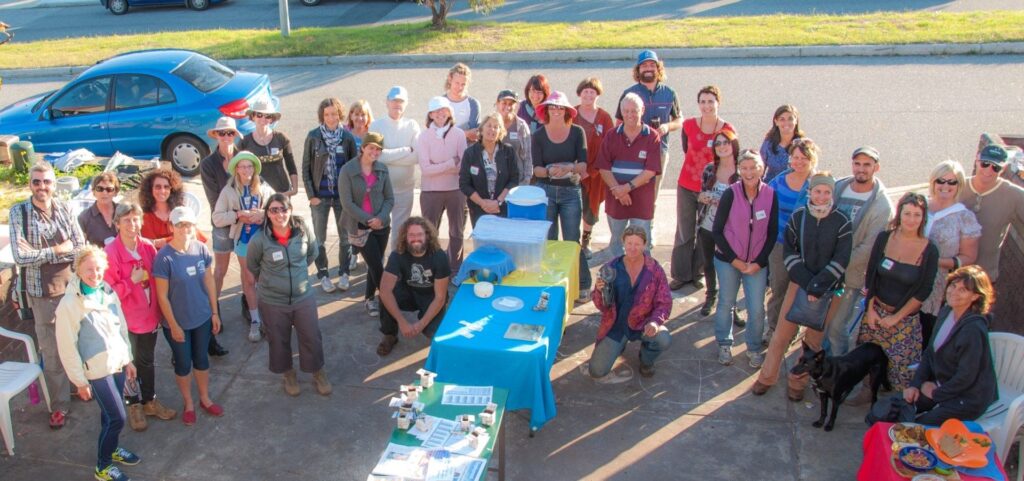
By Anna Donaldson
Originally published here.
Unless you’re Shani and Tim from Fremantle, walking goats through the streets of your inner city suburb probably isn’t part of your daily routine. It was definitely a first for me when I met the pair a few weeks ago, as part of my family’s journey around Australia.
For a few totally delightful hours, Shani and Tim welcomed me into the world of Ecoburbia and the West Beacy Bunch. A world where deep care for people and planet has been mixed together with hefty doses of ‘can do’ spirit, grounded pragmatism, and a joyful sense of fun. The result is one of the most connected, vibrant and supportive local communities I’ve seen.
The best bit? As Shani shared the story of how this had all come to be, I was struck by how achievable it felt. It had been built by a set of choices that are right within reach for many of us, across places and contexts.
So I’m delighted to share this as the latest story in the ‘Forest Alive’ series – a collection of real-life examples that help us imagine what a more positive culture of ageing in Australia could look like.
What’s the idea?
This one has layers.
First, there’s Ecoburbia. An average sized residential house and block in inner-Fremantle that Shani and Tim have reimagined and reconfigured – not to house a single nuclear family, but to create a comfortable, sustainable, affordable home for many.
Today, the property accommodates around 8 residents, thanks to thoughtful retrofitting that maximises both sustainability, self-sufficiency and liveability. Think a huge underground rainwater tank, lush veggie gardens, fruit trees, chickens and goats. The savvy use of space has turned a standard suburban block into a thriving little ecosystem. Cleverly configured private and communal areas also allow for both separation and connection, and have enabled flexible, affordable rental arrangements. Some residents, for example, trade help in the garden or around the house in exchange for part of their rent.
In addition to being a great place to live right now, Ecoburbia is also clearly set up for successful ageing in place. With a few planned modifications, and informal support available from other residents, it’s easy to imagine Shani, Tim or others continuing to live comfortably and independently in the home for as long as they desire.
Then, there’s the community in which Ecoburbia is embedded. The self-named ‘West Beacy Bunch’. And this is the bit that got me most excited. More than half of the 350 households in the surrounding streets are involved in this informal network of neighbours who regularly connect, share and support each other.
The ways in which individuals and households come together through the Bunch are as varied as they are delightful. There are shared dinners, afternoon teas, and games nights. Street parties and festivals. Movie nights in the park. Yoga classes. Christmas carolling. Neighbours swapping produce, sharing cars, bikes and tools, and running skill-sharing sessions or workshops on topics that matter – from building climate resilience to end-of-life planning and advance care directives. And when someone’s going through a tough time – like an older neighbour living alone – the community organically coordinates support to make sure they’re looked out for.
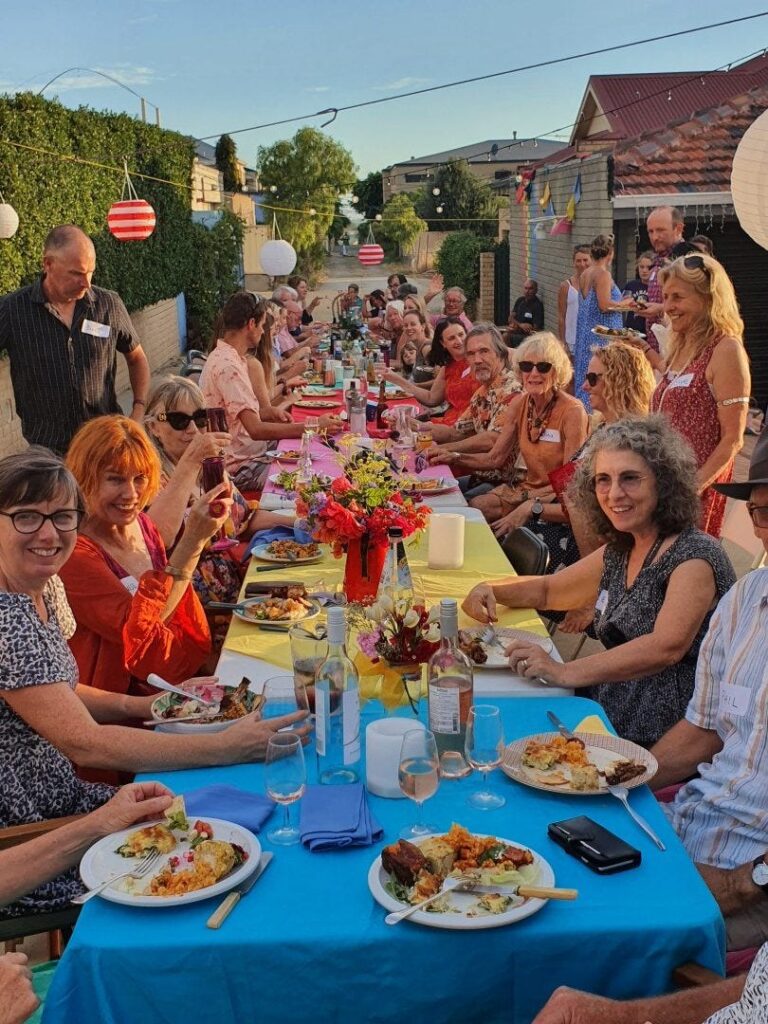
Sitting with Shani on their front verandah, I was amazed by the steady stream of neighbours dropping by, waving from cars, or pausing to chat as they walked home from work. An older neighbour dropped in and joined part of our conversation, reflecting on how community and contribution have shaped her own experience of ageing. And as we strolled with the goats through the streets, taking them on their evening walk, the number of waves and hellos from people passing by, or from the kids playing in the streets, was striking.
The fabric between these people is strong. It’s exactly the kind of richly woven, intergenerational, mutually supportive community I imagine when I talk about ‘the forest’ – and the kind of cultural change I believe Australia needs.
And what made it all possible?
As we sipped our tea, Shani explained that it had all been pretty simple.
“We just started doing fun things together”.
You can hear the play by play in Shani’s TED talk below. But here’s the short version.
It all kicked off when Shani and another member of her community decided to hold a community picnic. They knocked on doors and invited members of the 350 surrounding houses to come along. 100 came. At the picnic, they put out a whiteboard and invited people to suggest things that they’d like to do together as a community. Shani and her friend hosted a few of the ideas. Then others started to volunteer.
They collected contact details from attendees, and started a WhatsApp group and an email list. They invited neighbours to self-nominate to arrange one activity each for the year, and got people to set a date for their offering. Anything they liked – a drop in cuppa, a felt-making workshop, a street dinner – whatever they felt energised to host. Set a date, pop it in the calendar, and ask for help if you need it. That was it.
With 27 activities soon lined up across the year, the backbone for regular connection was in place. No committees. No meetings. No money. Just neighbours, doing what they could, when they could. And from there, things continued to flow.
Why I love it
By the time I left Shani and Tim’s house, I was totally buzzing – for a bunch of reasons.
It shows how simple (and fun!) it can be to build community.
Shani and her neighbours didn’t wait for the council, a plan, an invitation or a grant to get going. They just knocked on doors, invited people in, and did something fun. That first picnic sparked a ripple effect – and a few small steps turned into a thriving network. Yes, the effort of people like Shani to get things going was integral (and she continues to be a vital node in the network’s vitality), but it’s doable. Hosting one gathering for our neighbours each year? Surely most of us could do that…It reminds us that place is enough.
You don’t need shared interests, ages or backgrounds to build meaningful connection – just a shared street. Community can grow simply because people live near each other and choose to engage.It supports ageing in place – informally and organically.
When neighbours know each other and check in, older people can live independently for longer. I saw this in action – neighbours helping with small tasks, sharing meals, creating informal rosters of care. With these kinds of community networks in place, it suddenly becomes possible to take some of the pressure off family carers and the formal aged care system – both of which are under huge strain in our current culture and system.It’s genuinely intergenerational.
Kids, parents, mid-lifers, older adults – all are involved. The mix of ages brings a vibrancy that no age-specific program could replicate. And the best bit? The community is so naturally inclusive across ages that it didn’t even come up in my chat with Shani as something of note – it’s just how it is there. Which is exactly how things should be.It normalises end-of-life conversations.
This community isn’t afraid to talk about ageing, dying, and planning ahead. Building on the trust and relationships between neighbours, they’ve been able to host Death Cafés and advance care directive workshops – making these topics more accessible, and enabling people to reflect and plan together, rather than keeping it all behind closed doors.It reimagines what urban housing can look like.
Ecoburbia is a brilliant example of how even in urban settings, we can rethink traditional housing models and find more affordable, supportive ways of living. By sharing space while still maintaining privacy, residents benefit from everyday connection, affordable housing and a broader base of informal support – something that becomes especially valuable as we grow older.It challenges the idea that cities are necessarily disconnected.
I’ve sometimes caught myself feeling that inner-city living, sustainability, and strong community are somehow incompatible – or using it as an excuse not to personally invest in community-building where I live. Despite the density of people, it can feel all too easy to disappear behind your front door in city environments. But Ecoburbia and the West Beacy Bunch show it is possible to live these values in urban areas – and they remind me that location (and ‘being busy’) is no excuse not to try.
I’m so grateful to Shani and Tim for welcoming me into their home and community, and for the ongoing care and energy they invest in fostering connection in their neighbourhood. I know many lives are better for it – and I feel lucky to have caught a glimpse of what great place-based community can truly look like.
Now over to you…
🌱 Are you already doing something like this where you live, or know of another community that is? I’d love to hear about it!
You may also be interested in these stories
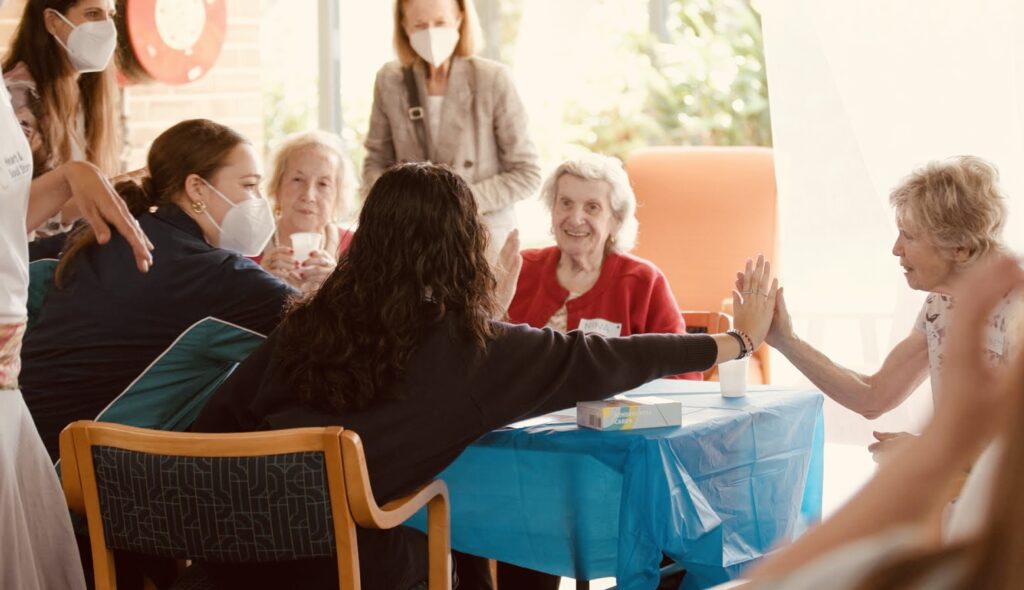
The Seniors and Teens Empathy Program
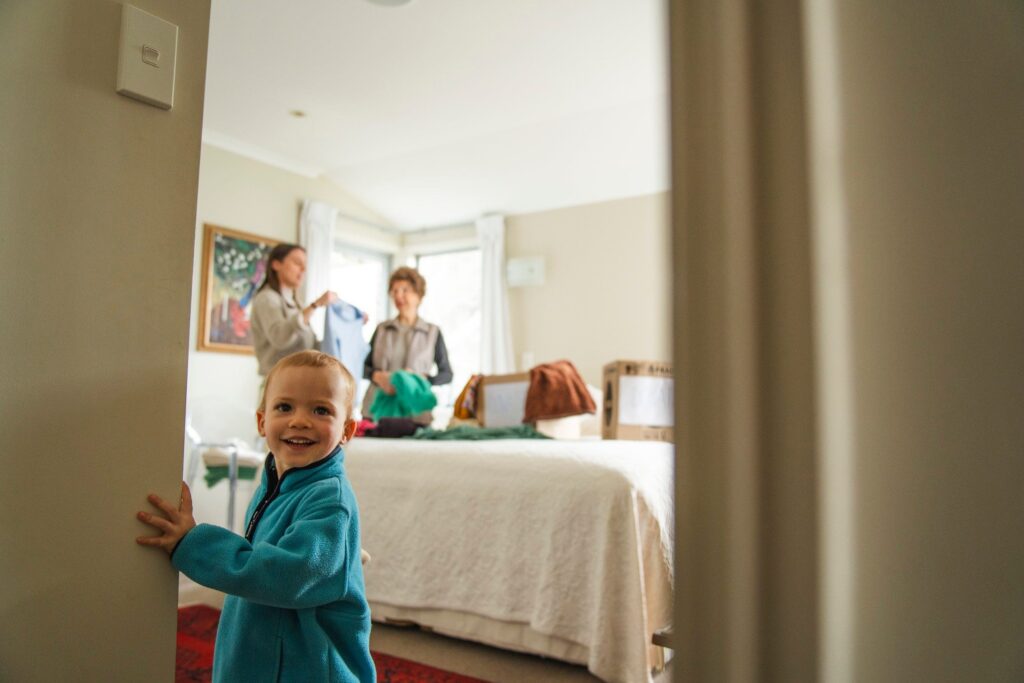
RockPool Collective
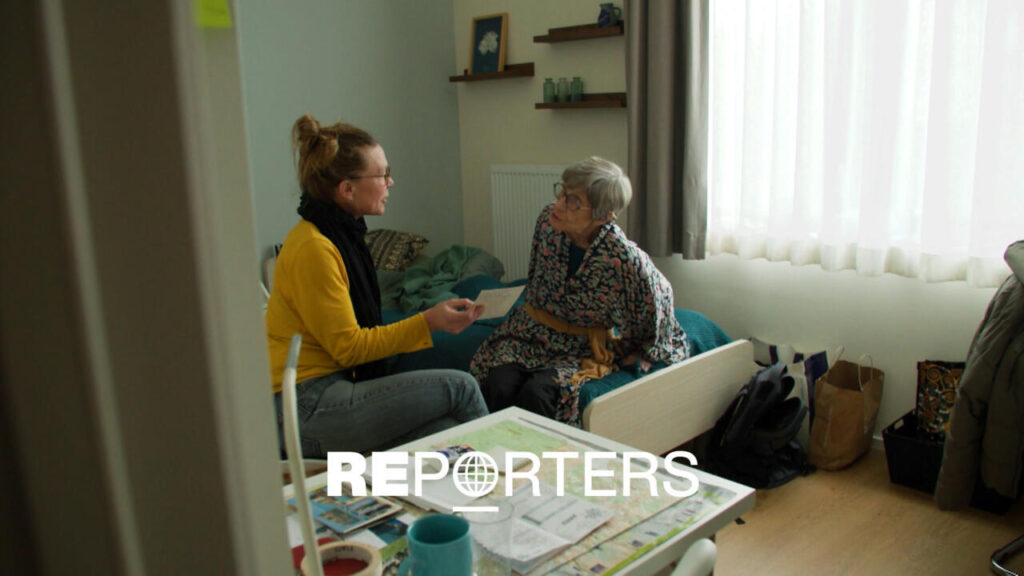
House of Pass-ages
Find your way in
Keen to join the conversation about these ideas, contribute your voice and perspective, or work with others to find new ways forward? Check out ways that you can join the change and participate in our work
